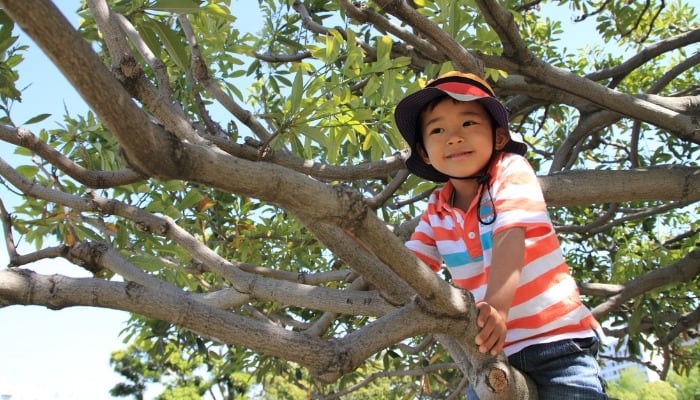During my childhood, my mom’s constant cry of “That’s too high!” served as the soundtrack of my life. As a result, I gained extensive knowledge about trees and the art of climbing them, including the best ones for outdoor adventures. However, should there be any difficulties in completing this task, an error message will be provided.
We’ll look at some of the best trees for climbing, but no matter the type of tree, two things must be considered before you climb one:
- The tree’s maturity, reflected by its size – Baby trees won’t support anyone but your toddler child, and climbing on one can inflict long-term damage. Plus, how fun is it to climb a tree that’s only a foot taller than you?
- The tree’s branches—these need to be strong and healthy. Dead trees will offer weak, brittle limbs, but even a live tree can have some unhealthy branches that might snap under your weight.
These two caveats apply to any tree you’re thinking about climbing, but some trees provide better climbing than others, so here are 18 of the best trees for climbing.
1. Live Oaks
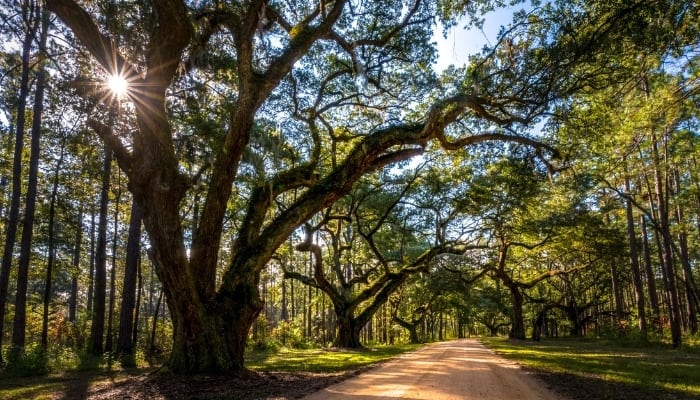
Live oaks make for the best climbing because, provided they’re healthy, they provide strong, solid branches for you to grab and pull up on, and they’ll support your weight when you stand or sit on them.
They grow so strong because they grow slowly—from 1-3 feet per year. That’s, at most, one-tenth of an inch a day. One of the best features live oaks offer to a tree climber is their low branches.
Unless the tree has had active pruning, it will have its lowest branch just a few feet off the ground, making for an easy climb.
Find strong, healthy trees at a great price here.
2. Buckeye
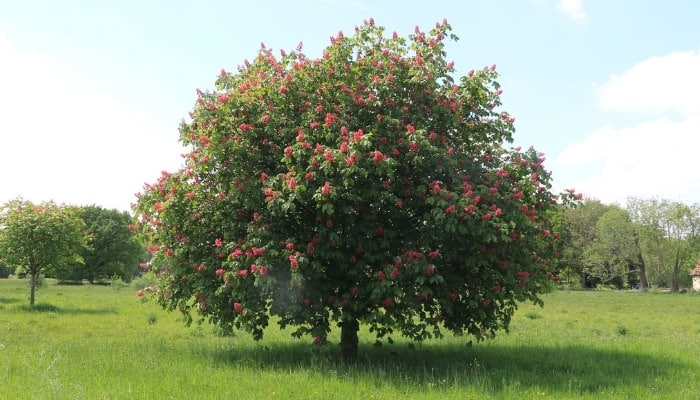
If you’re not climbing a buckeye tree but rather handling buckeye lumber, you might be surprised at how light it is.
The buckeye is a hardwood, so it’s pretty strong, but you’d be forgiven if you held the lumber and thought climbing a tree made of this stuff was a bad idea.
There are two main buckeyes—the Ohio buckeye and the California buckeye.
Neither is a huge tree (the California variety rarely exceeds 25 feet), but the strong branches offer good support, and the nice, big, round canopy means lots of choices for your climbing path.
3. Maple
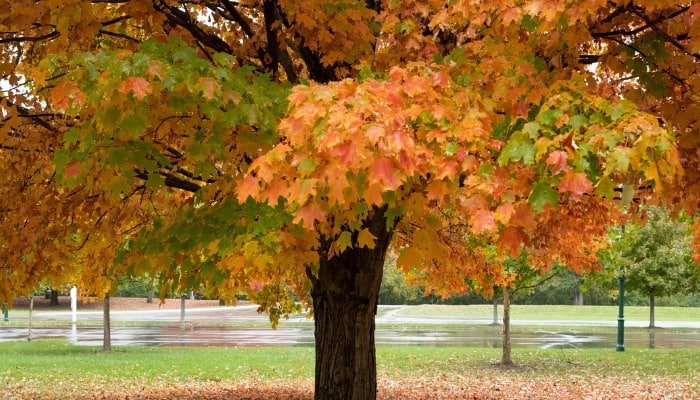
While there are more than 100 varieties of maple trees in the world, the two best maples for climbing are probably the silver maple and the sugar maple.
The silver maple is likely the tree people picture when they think of a maple tree with its iconic silvery-backed leaves.
It grows quickly and tall—some grow to be 80 feet high, a daunting height for even the most intrepid tree climber.
Sugar maples grow just a hair shorter—up to 75 feet—and might be the better of the two simply because of their adaptability and hardiness.
They grow throughout the United States and have round canopies. You can purchase healthy 4-5 foot sugar maples here.
4. Sycamore
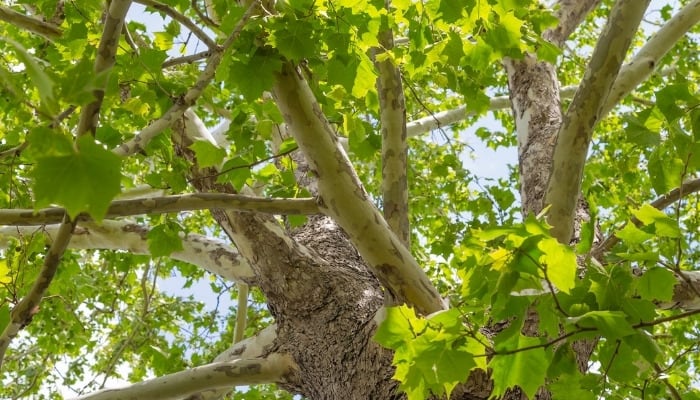
As one of the larger deciduous trees in the United States, the sycamore grows 100 feet. Its strong branches usually start pretty low on the tree, so you can make a quick start on your climb.
Because they grow best in deep, well-drained soil, there is little chance of them coming uprooted.
One potential problem with the sycamore involves its bark. This isn’t so much a problem for the tree climber as it is for the tree. Sycamore bark is notoriously thin and papery.
Since the bark covers the tree’s cambium—cellular tissue vital to a tree’s health—climbing a sycamore can potentially damage the cambium. Try not to disturb the bark for a healthy climbing tree.
5. Eastern White Pine
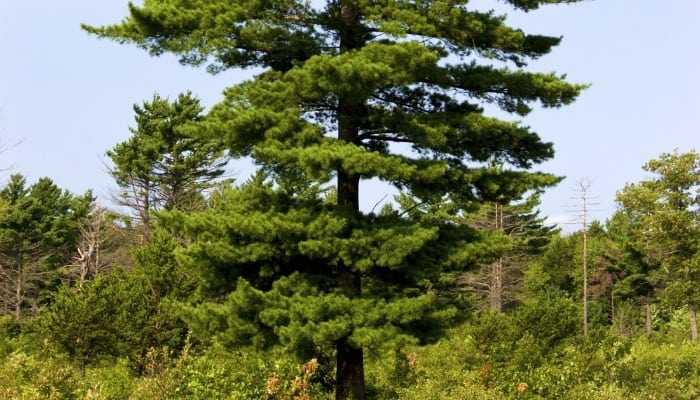
As one of North America’s largest conifer trees, the Eastern white pine can reach a height of 80 feet and live several centuries.
Untouched by people, the tree’s branches can probably grow low enough for a climber to reach, but landscapers tend to cut those off.
Therefore, the branches might start a little high for climbing and are widely spaced, so it’s not an easy climb.
One big downside to climbing one of these trees is the sap.
Sure, you probably won’t be climbing in Armani, but still, understand that whatever you’re wearing will have an excellent chance of being permanently marked from its encounter with the Eastern white pine.
The other downside comes with allergies to the bark. Some people develop an itchy rash wherever the park scratches them.
6. Hickory
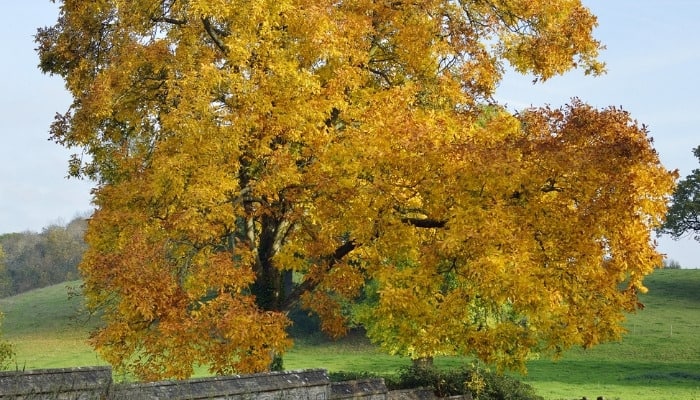
Climbing trees in North America means the possibility of encountering up to 12 species of hickory trees.
If you’re old enough to have been on the business end of the principal’s paddle in elementary school, you probably have first-hand knowledge of just how hard hickory wood is.
That translates well to climbing since the branches of a hickory tree are strong, stiff, and hard.
The ridged, grayish bark is pretty distinctive, but it also makes for a great surface on which to get traction as you climb.
As hickory trees are related to the walnut family, if you come across some of the tree’s egg-shaped nuts once you’re up there, feel free to have a snack.
7. Cherry
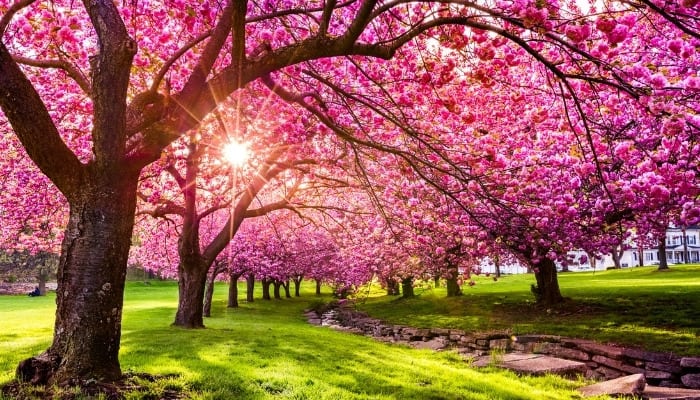
Don’t confuse the cherry tree with the cherry blossom tree. The latter famously blooms quite beautifully in Japan, Washington, D.C., and other locales, but it’s not a climbing tree.
It’s an ornamental tree, so think of a cherry blossom tree as a decoration that you just look at but don’t touch.
Though related, the cherry tree is much tougher and is well-suited for climbing, provided it’s an older tree.
They don’t grow to the dizzying heights of other trees on this list, but a 35-foot tree is nothing to sneeze at (black cherry trees can grow to about 60 feet).
The cherry tree also offers many branches in a wide canopy for ample climbing options. High-quality black cherry trees can be found for purchase here.
8. Walnut
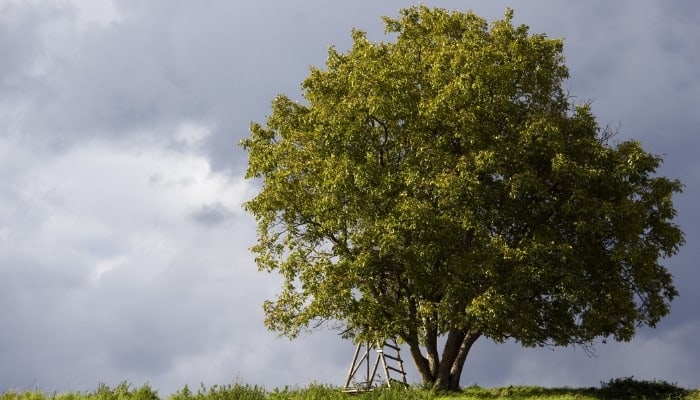
Of the several varieties of walnut trees, perhaps the English walnut tree is the best one for climbing (avoid the black walnut tree as it contains high levels of juglone, which can be toxic to humans).
It offers 60 feet of height (though some occasionally grow much taller), it has lots of branches, and many of those hang pretty low.
If you’ve never climbed a tree before, a walnut tree could be a great place for you to start, as having more branches translates into easier climbing.
Even if you consider the walnut a starter tree, climbing one can still be lots of fun. Strong branches extend high into the canopy so that you can get some serious altitude.
9. Birch
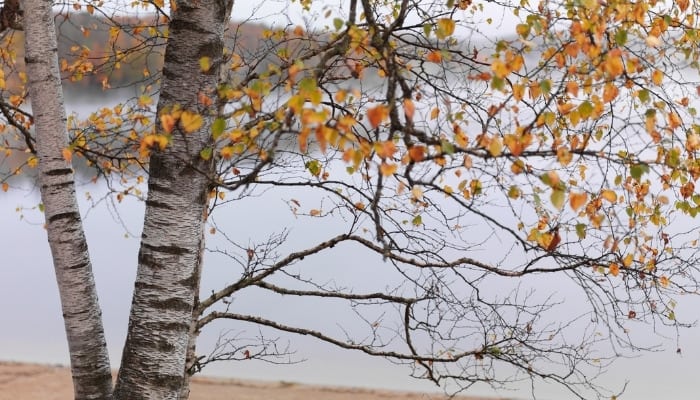
The silvery bark of the birch tree is nice to look at and easily identifiable. The tree itself is a climbing wonder. If you can find one in the wild—or a stand of them—you’re in for a treat.
You want a “wild” birch because these trees are particularly susceptible to illnesses instead of the ones that live in front yards—too much stress on them can cause them to die early.
Robert Frost’s poem “Birches,” speaks of not just climbing but also swinging on birch trees. These grow tall and thin—sometimes up to 60 feet.
Frost recalled birch-swinging in which the climber climbs as close to the treetop as possible. Eventually, the tree starts to bend one way or another under the climber’s weight.
A little back-and-forth gets the tree swinging, and inertia eventually slings the climber (still holding the tree) far enough out and over that he can let go and land safely on the ground while the birch tree snaps back into position.
Great fun. Admittedly dangerous.
10. Apple
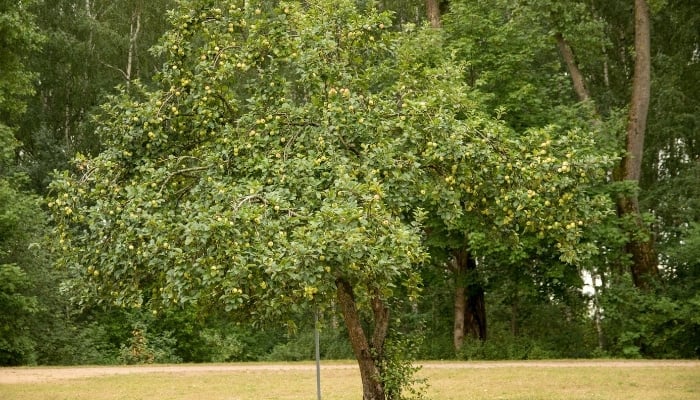
Another tree with several varieties, some apple trees offer great climbing.
The dwarf apple tree? Not so much. While they only grow to about 30 feet, they often have a few very large limbs near the tree’s base. Some climbers might even be able to step up into an apple tree.
You’ll want to wait until the apple tree is at least six years old before you try climbing it, and even that young a tree will be for junior climbers.
You definitely shouldn’t even think of climbing an apple tree until it has produced a couple of seasons’ worth of apples. That would indicate maturity in the tree.
The older the tree gets, the stronger the branches will be. Find the ever-popular Red Delicious apple trees for sale at reasonable prices here.
11. Magnolia
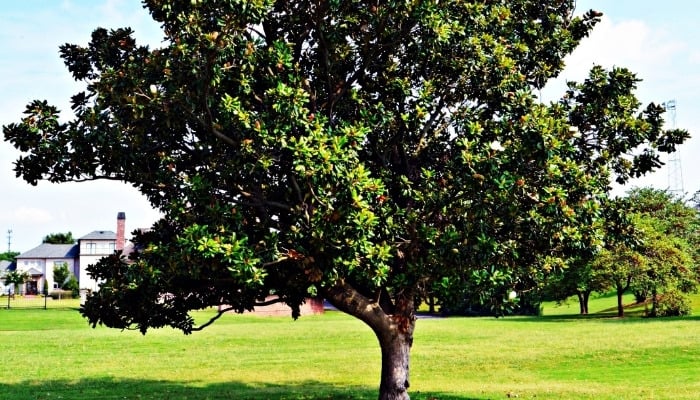
Since there are magnolia trees and shrubs, let’s be clear and say that you shouldn’t climb a magnolia shrub. It’s not very tall, and you’ll break something on it.
A magnolia tree can grow as tall as 70 feet, and even though it’s not a shrub, its canopy has a bushy characteristic.
This makes for great climbing because the branches grow uniformly enough to evoke a ladder.
Magnolias can be either evergreen or deciduous. It’s a versatile tree, but all you need to know for climbing one is whether it can support you. Look for big branches, and get going.
12. Weeping Willow
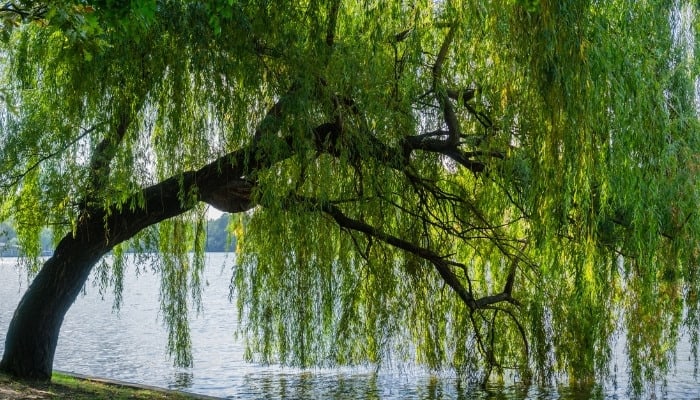
Aside from their beauty, weeping willows are terrific trees because they are so imminently climbable.
Their branches grow so low to the ground that just about anyone can clamber up into one of them.
Their long, drooping leaves make for a lovely atmosphere when you’re up in the tree, and the strong, thick branches extend far up into the tree so you can climb high in one of these 70-foot trees relatively safely.
13. Mulberry
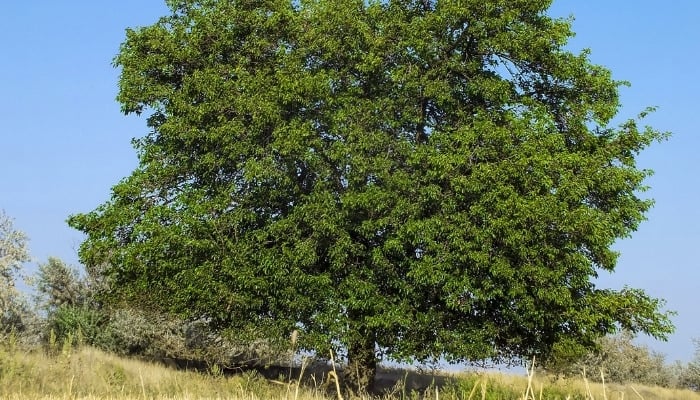
The mulberry tree is another tree that isn’t a skyscraper (usually about 35 feet tall) but is still fun to climb.
The mulberry ranks up there with the strongest trees for its strong branches, so a good, thick branch will support just about any tree climber.
The best part about climbing mulberry trees is the mulberries themselves.
While they’ll stain the heck out of your clothes, their sweet tartness is all the more satisfying when sitting perched 20 feet off the ground.
14. Cottonwood
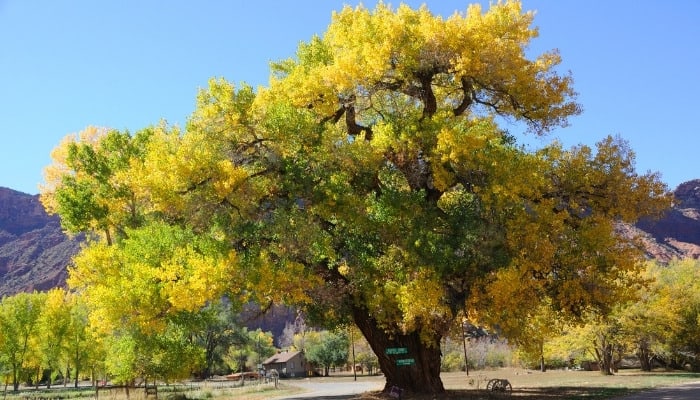
As the fastest growing tree in North America, the cottonwood tree can easily reach 100 feet.
It’s a good tree for climbing because you can really get up there and see for miles, but there are some drawbacks to the trees and to climbing them.
The wood is relatively soft, and because the tree grows so fast (up to six feet per year), its branches are brittle.
Climbers should take heed of each planned step while in a cottonwood tree. Also, the tree has a somewhat thin bark, making it susceptible to damage from climbers.
15. White Oak
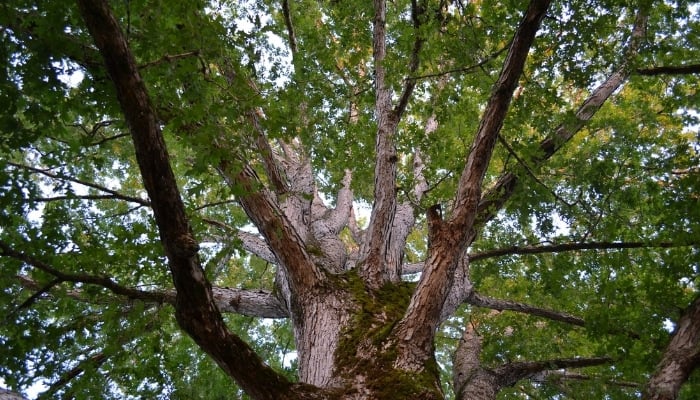
Growing to between 50 and 80 feet tall, white oaks are big, sprawling giants that practically beg to be climbed.
The trunk is almost stubby with substantial lower limbs growing quite close to the ground. Being a member of the oak family, the white oak’s slow growth makes for strong branches.
They can live hundreds of years, and older white oaks may have extended their trunks, making the lower branches a little harder to reach.
16. Red Oak
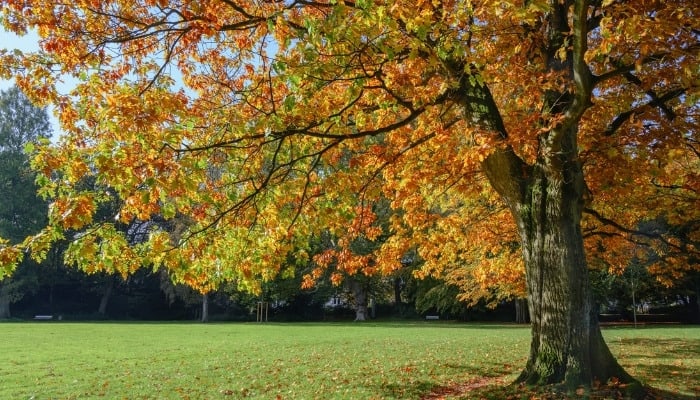
Like the white oak, the red oak tree also offers great climbing with thick, strong branches and heights of up to 75 feet.
They can live to be 500 years old, and with all of that being slow growth, you’ll be hard-pressed to find a more solid tree for climbing.
Again, being an oak, it provides low branches, so you might not even need a boost to start your climb.
17. Scotch Pine
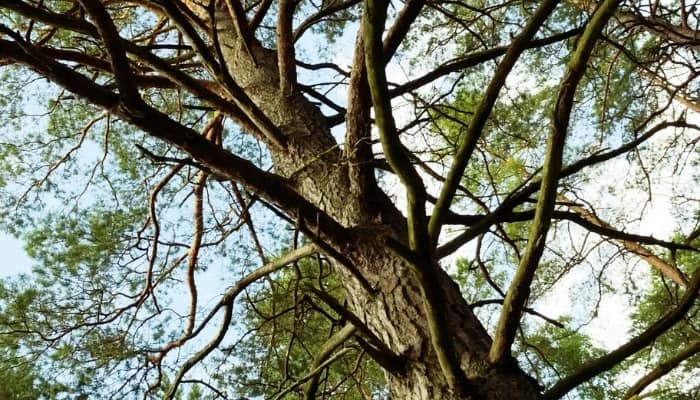
The Scotch pine is the most common pine tree in the world, so if you climb pine trees, the chances are good that you’ve climbed one of these.
This tree offers a bit more spread than some of its pine brethren, and its branches tend to be lower on the trunk too.
A mature Scotch pine will almost be spherical—it’s 60 feet tall and 40 feet wide. All that width makes for lots of branches to grab while in the tree.
18. Pear
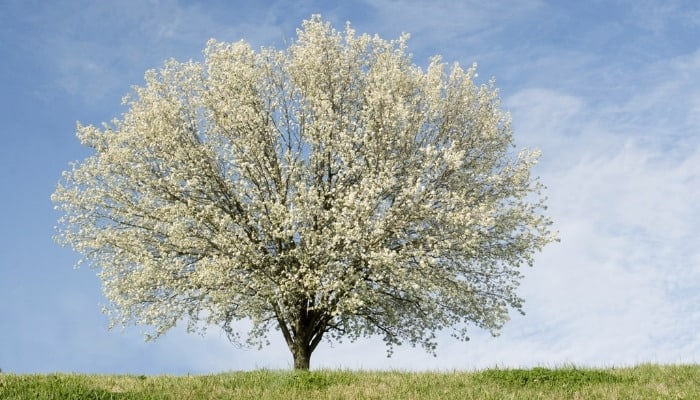
A full-size pear trees can be up to 40 feet tall, but it can be a great climbing tree, especially for kids. It’s got many branches that usually start pretty low to the ground.
The bonus, of course, is the pears you get to eat once you’ve found a place to sit.
The variety of pear trees matters, though. A Bradford pear tree is lovely to look at but is inherently structurally unsound.
They are easily damaged by high winds, so it follows that climbing in them is unsafe. They don’t grow as tall as, say, a Bartlett pear tree, so maybe you won’t get hurt too badly if you fall.
Conclusion
Tree climbing has been around for a very long time. It has stuck with us because it’s fun, and when you’re climbing a tree, you can feel like you’re on top of the world, away from some of your responsibilities.
We’ve now looked at the 18 best trees for climbing. So, go outside and climb some of those trees if they’re available in your area!

